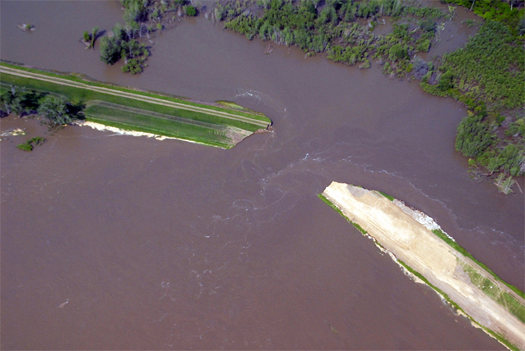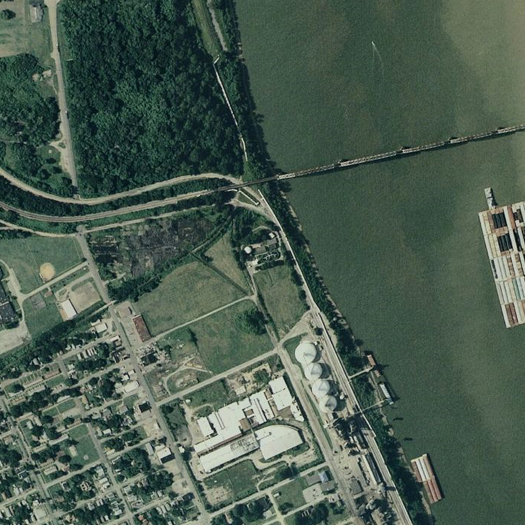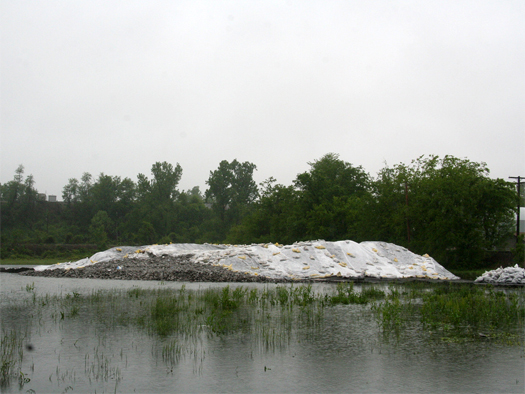
[The breach in Missouri River Levee 575, on June 14.]
The breach at Hamburg — mentioned a few posts back — began with a “sand boil”, a geotechnical phenomenon shared by earthquakes and floods, in which subterranean water pressure becomes so strong that ground water erupts, typically bubbling like a gentle geyser, and bringing soil with it. In the case of levees, this soil is coming from inside or beneath the levee — if not contained, the sand boil essentially becomes the outlet for a concealed hydrologic pipe, conveying soil and water through the levee — and so the sand boil represents an imminent threat to the stability of the levee. General Derek Hill, head of Iowa Homeland Security, indicated that the sand boil at Levee 575 was around an inch in diameter. This is an ordinary size for a sand boil.
In response, flood fighters will build rings of sand bags around the boils, in attempt to contain the boil’s water within a pool. That pool exerts a downward force on the boil, often stabilizing the pressure on the inside and outside of the levee long enough for flood waters to recede and remove the pressure that first generated the boil.


[Top: the Cairo wastewater treatment plant is at center of this image from Bing Maps; above: the sand boil at the Cairo treatment plant, via the USACE Memphis District.]
In late April, as the engorged Mississippi and Ohio Rivers swelled downstream through Illinois and Missouri, a massive sand boil appeared in Cairo, which sits at the junction of those two rivers. This boil (above), which appeared in a field adjacent to the Ohio River (top), was, according to the Army Corps, a stunning thirty to forty feet wide — the largest sand boil ever.

